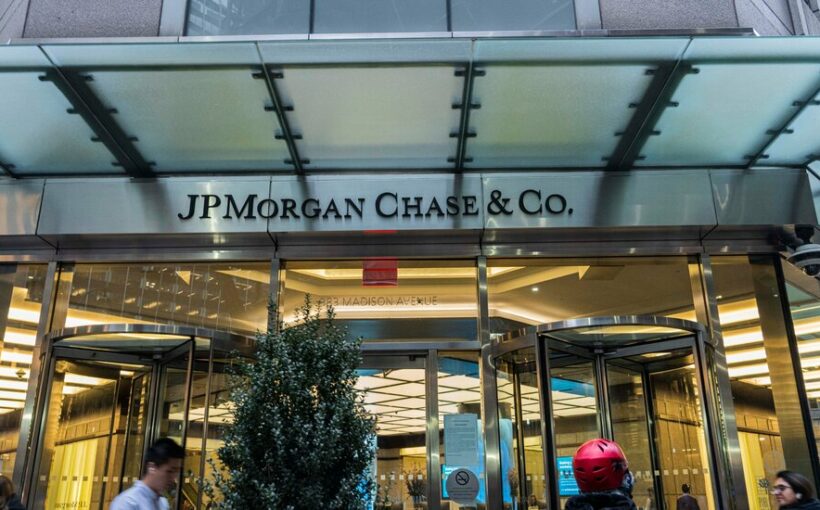Despite tenuous times for the banking industry, some of the largest U.S. lenders reported banner first-quarter earnings on Friday that easily exceeded investor expectations. And even as they warned that credit could become more scarce and expensive, they said that the economy was proving resilient so far.
The banks’ earnings were bolstered by higher interest rates, which allowed them to charge more for loans above what they pay out on deposits. The robust reports were also a reflection that the collapse of Silicon Valley Bank and Signature Bank last month appear to have strengthened the biggest banks by driving customers toward larger institutions perceived to be more stable.
JPMorgan Chase, the nation’s largest bank, reported revenue that rose virtually across the board, helping it pull in $12.6 billion in profit, a 52 percent jump from the same quarter a year earlier. Its customer deposits rose slightly in the first quarter from the previous quarter, with inflows picking up in particular after smaller competitors saw depositors pull cash en masse, the bank said.
“We had a rough spell in March, but things are looking better now,” said JPMorgan’s chief financial officer, Jeremy Barnum.
His boss, chief executive Jamie Dimon, who has taken a leading role in bailing out smaller lenders, said the banking crisis was distinct, but that financial conditions were likely to tighten as lenders, including JPMorgan, become more conservative. “We are going to eventually have a recession, but that may be pushed off a bit,” he said.
Citigroup, the country’s third-largest lender, reported a profit of $4.6 billion in the first quarter, up 7 percent from the same period last year and well ahead of forecasts. Revenue jumped 12 percent from the previous year, which came “despite the tumultuous environment for banks,” Jane Fraser, the bank’s chief executive, said in a statement.
The bank’s loan book was roughly unchanged and deposits fell 3 percent from the previous quarter.
Wells Fargo also surpassed analysts’ expectations, reporting a profit of nearly $5 billion in the first quarter, a 32 percent increase from a year ago. Rising interest rates lifted the bank’s earnings as its loan portfolio grew, led by gains in personal lending and higher credit-card balances.
There was little sign of nervous depositors fleeing to the safety of the lender, the nation’s fourth-largest bank. The average deposits at Wells Fargo dropped $24 billion, or 2 percent, from the previous quarter.
Charlie Scharf, the bank’s chief executive, said Wells Fargo was “glad to have been in a strong position to help support the U.S. financial system” during the industry’s recent turmoil. The bank’s top priority, he said, remains improving its internal controls; the bank has for years been battered by regulators and has paid billions in fines for a wide variety of misdeeds.
Analysts are closely watching banks for signs of tightening lending that could lead to a credit crunch, but Wells Fargo “hasn’t substantially changed our credit risk appetite” over the last quarter, according to Michael P. Santomassimo, the bank’s chief financial officer.
“Consumers and many of the businesses that are our clients came into this environment in a very strong position,” he said. “Consumers continue to spend.”
PNC Financial, the country’s sixth-largest bank, said that the industry volatility ended up playing to its strengths. Although it has been swept up in the turmoil surrounding midsize banks, PNC, a so-called super regional lender, is bigger and more diversified than its smaller rivals. PNC played savior in last month’s rescue plan for the ailing First Republic Bank, putting $1 billion in deposits into the bank as part of a $30 billion deal engineered by Mr. Dimon.
PNC’s deposits grew slightly last quarter — but were down compared with a year ago — as its net income rose to $1.7 billion, up 9 percent. Its revenue dropped 3 percent, to $5.6 billion, which the bank attributed in part to higher funding costs.
Investors welcomed the batch of bank reports, their first look inside the books of the industry bellwethers since the failure of Silicon Valley and Signature Bank, sending share prices higher. JPMorgan’s stock jumped 6 percent in premarket trading, leading the gains among banks.
“The banking system is very sound — it’s stable,” Lael Brainard, director of President Biden’s National Economic Council, said this week at an event in Washington. “The core of the banking system has a great deal of capital.”
But staff at the Federal Reserve projected that general banking turmoil would spur a recession later this year, according to minutes of a policymakers’ meeting last month. “Given their assessment of the potential economic effects of the recent banking-sector developments, the staff’s projection at the time of the March meeting included a mild recession starting later this year with a recovery over the subsequent two years,” the minutes showed.
Source: Read Full Article
